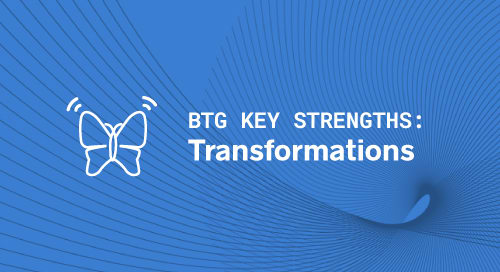
When it comes to the myriad wrenches thrown into virtually every company’s plans over the past few years, the most besieged industry might very well be the one responsible for protecting the rest—the insurance industry.
The challenges created by global crises, cybercrime, and climate concerns are shared by many, but for insurers, they’re more than challenges: they’re massive cracks in the industry’s long-stable foundation. Risk pricing has become wholly unpredictable, and the only reliable trend is the upswing in costs.
In 2020, pandemic-related payouts spiked to $90 billion, the largest year-over-year increase since the 1918 influenza outbreak. From 2020-2022, the U.S. experienced more than 60 weather and climate disasters, with the cost of each averaging $151.1 billion—a 56 percent increase (CPI-adjusted) from the decade prior.
Demand has surged in response to these tragedies, but while recent reports indicate that rate hardening has helped improve combined ratios overall, premiums continue to lag behind inflation. Meanwhile, rising costs and unreliable risk pricing amplify the potential for future asset-liability mismatches.
Uncertainty is pushing the industry to prioritize resilience. Meanwhile, seismic changes in customer behavior are heightening insurers’ struggle to remain relevant. Without resilience and relevance, growth remains out of reach. Yet both require something that’s in short supply everywhere: talent.
After all, it’s no longer enough to be tech-enabled; organizations need to be digital-first and customer-centric. To achieve this type of digital transformation in the insurance industry, however, many carriers will need to look outside the bounds of their own networks. The instinct might be to bring in a Big 3 insurance consultant, but many Fortune 100 companies find that the greatest advantages are realized when partnering with a talent marketplace that offers access to a wide range of high-end independent experts.
Finding new paths forward
Most digital initiatives in insurance are focused on future-proofing and flexibility right now. At the same time, it’s digital convenience and data security that top consumers’ wish lists. Fortunately, the two are far from mutually exclusive. By targeting the sweet spot where these priorities intersect, insurers are able to move beyond resilience as a risk-management buzzword to explore the opportunities it offers for sustained growth, even amidst volatility.
With market stability all but a memory, flexibility is the industry’s future. As the distribution landscape continues to evolve, traditional insurers will need to seek ways to meet customers where they’re at. Embedded insurance has already disrupted the industry in this way, shaping customer expectations around seamlessness and ease while also creating inroads for non-traditional players.
In its 2023 Insurance Outlook, Deloitte forecasts that gross premiums for embedded insurance products will “grow by as much as six times, to US$722 billion by 2030, with China and North America expected to account for more than two-thirds of the global market.” Though everyone from manufacturers to retailers is looking for ways to cash in, traditional insurers still have the benefit of being the foundation upon which these new distribution channels are being built.
That said, as these channels grow and change, innovation must also come from within. Few organizations possess adequate internal resources for digital transformation and find themselves unable to pursue these types of initiatives due to skills gaps or a need for strategic guidance. Unfortunately, with 50 percent more jobs available than workers right now, the conventional labor market isn’t much help.
Insurance digital transformation trends
Product development isn’t the only area in which growth-oriented insurers need to focus their efforts, either. Digital transformation in the insurance industry also requires attention to:
- Digital convenience and personalization
This can mean overhauling existing processes or creating new ones, but either way, these have become the central tenets of any customer-first strategy. - Speed to market
Low-code tools and investment in technology integration can help insurers solve for emerging issues and respond quickly to changing needs. - AI and data analytics implementation
Both AI and data analytics are proving to be valuable tools for improving underwriting, claims processing, and customer service. - Environmental, social and governance (ESG) initiatives
The importance of ESG continues to grow, from both a risk-mitigation and a customer values perspective. - Data security and fraud mitigation
Cybercrime not only undermines trust with customers, it’s also a double-edged sword for insurers in that the cost of breaches is steadily rising. Statistics from the World Economic Forum (WEF) indicate that if cybercrime were a country, it would have the third largest economy, behind the U.S. and China.
The movers, the shakers, and…the stayers
The ways in which insurers are approaching these trends is as widely varied as the policies they offer. Ultimately, however, they fall into three primary categories: movers, shakers, and stayers.
The movers are the ones who are overhauling everything within their organization to pursue a more proactive model. They’re using AI to right-size policies while working with policyholders and the government to reduce risks and minimize losses.
The shakers are aware of the need to make big moves, but are still feeling their way forward, “shaking the box” to see which existing systems can be renovated without requiring a complete teardown. They’re starting to embrace a customer-first strategy and making smart shifts to align tech enablement, distribution, and client services.
The stayers are…just that. They’re staying the course, using short-term cost-cutting efforts as a rudder to steer them toward incremental improvement and limited refinement. They’re hoping the industry’s previous stability will return sooner than later, and minimizing what they perceive as additional risks in the meantime.
Regardless of approach, the fact remains that there’s a growing need for specialized skills and experience, and a shrinking talent market to support it. That’s why the industry’s movers and shakers, in particular, are turning to independent consultants for targeted expertise in strategic areas amidst an insurance talent shortage.
Independent insurance talent as an engine for transformation
Ongoing rate hardening and persistent inflation have tempered immediate expectations for growth, making it an ideal time for start putting the infrastructure in place for transformation and future growth initiatives. At BTG, we’ve seen a distinct uptick in demand for talent with strategic expertise, in particular. Carriers are turning to independent insurance talent for a number of reasons:
Depth of experience
Much of the high-end independent talent pool is composed of former Big 3 consultants and C-suite execs, which means they know their stuff backwards and forwards. At BTG, we carefully vet and curate our highly skilled talent to also ensure each is ideally matched to their projects.
When looking for an AI expert for an insurance digital transformation, for example, it’s critical that the selected consultant also has a solid background in privacy. Other times, extensive experience in an adjacent, yet equally highly regulated industry can be a great fit.
One of the best instances of this was when the procurement leader at a global insurance company needed a consultant to help address coverage issues resulting from natural disaster losses. She already had a variety of data models at her disposal, but she specifically wanted someone specializing in reconstruction and replacement costs who could provide an outside perspective.
BTG connected the procurement leader with an insurance business consultant who has deep experience in risk management for luxury estates and high-value assets. In addition to thoroughly reviewing their coverage and identifying existing gaps, he also scoped out areas of potential future risk.
Agility
With on-demand access to talent, our clients are able to move quickly and decisively, whether flexing their team for specific needs or developing new functions within their organizations.
In one case, the corporate innovation lead for a global insurance company needed to build out the organization’s strategy function in order to support its aggressive 2030 goals. Among these goals were digital transformation, geographic expansion, and revenue growth, so BTG delivered a growth strategy executive and former Big 3 strategy consultant with deep expertise in organization design.
The consultant was able to identify capability gaps and develop a robust plan to bridge them, all while building out the 2030 plan itself and developing a charter with specific and repeatable deliverables.
Synergy
More often than not, digital transformation requires expertise beyond the immediate industry in order to bring the project together. We work with our clients to identify which experts to bring in—and when—to provide support that seamlessly integrates with their internal teams.
It’s not always the technology piece that’s missing, either. For example, when one of our large (4 million-members-strong) insurance clients was implementing new software that would affect enterprise-wide operations, it wasn’t the tech build they were concerned with—it was the potential for slow or inconsistent adoption within the organization.
Worried that their huge investment would be wasted if employees resisted the change, they turned to BTG. We paired the client with a consultant who has a PhD in organizational psychology and deep experience with increasing buy-in to proposed changes. After conducting a full change impact assessment, the consultant created and executed a critical project rollout roadmap involving interactive trainings and sustained engagement.
Cost Savings
In the current tight labor market, competition for quality talent is fierce, driving up costs for recruiting, onboarding, and full-time salaries. Plus, it could be argued that the insurance industry—or, at least the areas where insurance companies tend to be located—isn’t as exciting or attractive to candidates as other, flashier industries. With independent talent, access to high-end talent isn’t limited by geography; and because support can be ramped up or down as necessary, you only pay for what you need right now.
Independent insurance talent is also particularly cost-effective when it comes to short-term needs, such as when a key team member steps away temporarily or is pulled into a time-sensitive project. Hiring a full-time replacement would be both costly and wasteful, because by the time the right candidate was identified, vetted, and hired, the need would no longer exist.
To illustrate, when the VP of Claims Operations at a large multiline insurance organization was pulled into a large post-acquisition data migration, their responsibilities needed to be backfilled — but only until the migration was complete.
BTG matched the client with the former EVP of Digital Insurance at Capgemini to fill the interim executive role. The talent assimilated seamlessly, and they not only managed day-to-day operations throughout the engagement, they also helped the team modernize its operations and improve its reporting and use of data.
Which insurance talent skills are most in demand right now?
Of the skills most frequently requested from our insurance business consultants, the top two are squarely focused on strategy, two lie in the realm of technology, and one puts service front and center. Our 2023 Skills Index found that the top five most in-demand skills in the insurance industry are:
- Innovation Strategy
- Growth Strategy
- Digital Marketing
- Service Operations
- Artificial Intelligence and Machine Learning
In fact, 42 percent of the insurance projects our talent are committed to right now are strategic in nature, and 23 percent are related to transformation. Some of the ways in which they are helping insurers grow amidst uncertainty are by helping to develop new digital tools, advancing ideation by creating innovation training programs, and improving the ways in which they interact and communicate with customers.
Which path forward makes the most sense for your insurance business? Even if you’re not sure, our talent can help you figure that out. The sooner you get started, the more resilient you’ll be. Let us know how we can help.
About the Author
More Content by Emily Slayton





















